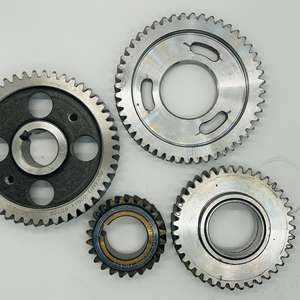Determining the specific automatic transmission in an Audi vehicle is essential for maintenance, repair, and parts procurement. As a mechanical engineer, I emphasize that incorrect identification risks component incompatibility, operational failures, or costly errors. Audi employs several automatic gearbox types across its lineup, including conventional torque-converter automatics, dual-clutch transmissions (S Tronic), and historically, continuously variable transmissions (Multitronic). Identification relies on systematic methods leveraging technical resources and physical inspection.
(how to know what gearbox you have in a automatic audi)
The Vehicle Identification Number (VIN) is the primary resource for transmission identification. Located on the dashboard near the windshield or the driver’s door jamb, the VIN is a 17-character code. Audi’s factory documentation links the VIN to the original transmission specification. Critical VIN positions vary by model year but typically include positions 4-8 (indicating model and engine) and position 7 (often related to restraint system but contextual for drivetrain). Cross-referencing the VIN with Audi’s electronic parts catalog (ETKA) or manufacturer databases reveals the gearbox model. For instance, a 2015 Audi A6 might use the 0BK 8-speed automatic, while an S3 could feature the 0DE 6-speed S Tronic. Online VIN decoders offer preliminary data but lack granularity for transmission specifics; thus, dealership or certified service center verification is recommended for certainty.
Physical inspection provides definitive confirmation when documentation is unavailable. Accessing the transmission requires lifting the vehicle securely. Identification tags or engraved codes are typically located on the transmission housing. For longitudinal engines (common in A4, A6, A8), inspect the rear of the unit near the output flange. For transverse applications (A3, Q3), check the side casing. Codes such as 09L denote an 8-speed Tiptronic, while 0B5 indicates a 7-speed S Tronic. Clean the area thoroughly to read alphanumeric stamps. Record any part numbers (e.g., 8W0 300 043) and cross-reference with Audi parts databases. Note that oil pan shape or sensor placement can offer visual clues but are insufficient alone due to design evolution.
Diagnostic tools complement identification. An OBD-II scanner interfacing with the Transmission Control Unit (TCU) retrieves software codes and hardware identifiers. Using specialized software like VCDS (VAG-COM) or ODIS, read the TCU module for part numbers and software indices. For example, a TCU part number suffix like “KXB” correlates to a specific DSG variant. This method is effective for post-2000 vehicles with standardized OBD protocols.
Common Audi automatic transmissions include the 8-speed ZF-built Tiptronic (code 0BK/09L) in A4-A8 and Q5-Q7 models, renowned for robustness. The S Tronic dual-clutch series, such as the 7-speed 0B5 (longitudinal) or 6-speed 0DE (transverse), features in performance and compact models. Earlier CVT Multitronic units (01J/0AW) were prevalent in pre-2017 A4/A6 FWD variants. TFSI engines often pair with S Tronic in S/RS models, while TDI diesels typically use Tiptronic.
Identification challenges arise from mid-year production changes, regional variations, or aftermarket modifications. For example, 2012-2014 A4 models may transition between Multitronic and S Tronic depending on market. Always verify findings against multiple sources. Incorrect fluid type or service intervals from misidentification can cause irreversible damage. Consult Audi technical service bulletins or authorized dealers when uncertain.
(how to know what gearbox you have in a automatic audi)
In summary, accurately identifying an Audi’s automatic transmission demands methodical use of VIN decoding, physical inspection, and electronic diagnostics. This diligence ensures appropriate servicing and sustains transmission longevity, underscoring the engineer’s role in precision-based automotive maintenance.


